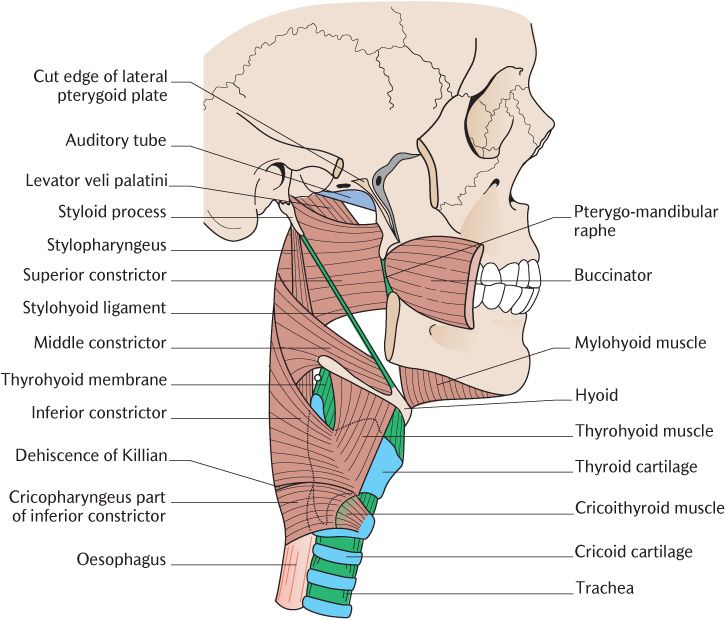

Above the cricopharyngeal muscle, the walls of the hypopharynx contain the oblique fibers of. At the esophageal inlet, the fibers of the cricopharyngeal muscle run transversely, thus forming the UES. The present study was planned to provide. The pharyngeal constrictor muscles form a funnel, and the mouth of the esophagus is like a transverse slit at the bottom of this funnel. Motor incoordination of the cricopharyngeus can cause difficulty swallowing. Apart from the three constrictor and three longitudinal muscles there are various supernumerary muscles in the pharynx. Uncoordinated contraction, and/or spasm and/or impaired relaxation of this muscle are currently considered the main factors in development of a Zenker's diverticulum. The inferior fibers are horizontal and continuous with the circular fibers of the esophagus the rest ascend, increasing in obliquity, and overlap the Constrictor medius.Īs soon as the bolus of food is received in the pharynx, the elevator muscles relax, the pharynx descends, and the constrictores contract upon the bolus, and convey it downward into the esophagus. On the thyroid cartilage it arises from the oblique line on the side of the lamina, from the surface behind this nearly as far as the posterior border and from the inferior cornu.įrom these origins the fibers spread backward and medialward to be inserted with the muscle of the opposite side into the fibrous raphé in the posterior median line of the pharynx.From the cricoid cartilage it arises in the interval between the Cricothyreoideus in front, and the articular facet for the inferior cornu of the thyroid cartilage behind.The components arising from the cricoid and thyroid cartilages are also known as cricopharyngeus and thyropharyngeus respectively.


 0 kommentar(er)
0 kommentar(er)
